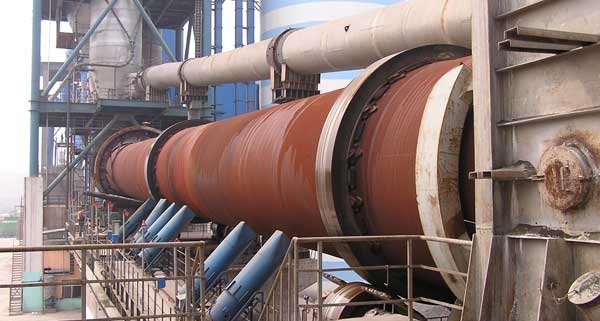The degree of homogenization of raw materials and raw materials in cement plants is an important factor in determining the quality of the final product. In order to make full use of low-grade limestone, expand the raw material resources and improve the quality of clinker, modern cement factories attach great importance to the pre-homogenization of raw materials and the homogenization of raw materials. In the vertical kiln cement plant, because the vertical kiln calcination is not uniform, it is necessary to reduce the fluctuation of raw material composition and improve the uniformity of raw materials into the kiln. This is an important condition for the high quality and high yield of the shaft kiln.
The homogenization of raw materials is completed in the production process from mining, transportation, crushing and storage, grinding, and raw material agitation. Each production process has a certain degree of homogenization, and finally reaches the raw material composition of the kiln. The required control criteria, in which limestone pre-homogenization and homogenization of the milled raw meal are the two most important homogenization processes to complete this homogenization process.
1. The design of the raw material homogenization library should meet the following requirements:
(1) The homogenization method should adopt continuous homogenization;
(2) The standard deviation of the calcium oxide content of the raw material into the kiln shall be less than 0.25%.
(3) The raw material moisture should be controlled below 0.5%, and the maximum should not exceed 1.0%;
(4) Dust collection equipment should be installed at the top of the raw material homogenization and the bottom of the reservoir.
2. The design of continuous raw material homogenization library should meet the following requirements:
(1) Each process production line should be equipped with one or two continuous homogenization banks;
(2) Raw materials should be evenly dispersed in the storage, and the storage of the top material distributor should be selected according to the diameter of the reservoir;
(3) When designing the inflation system, the resistance should be reduced. The arrangement of the inflatable box should reduce the dead zone in the warehouse, and the gas permeable layer material with good air permeability, uniform air distribution and wear resistance should be selected; the gas box and piping system should be well sealed;
(4) The bottom of the library should be supplied with a Roots blower, and should be reserved. The amount of inflation should be determined according to the form of the bottom of the reservoir and the area of the same inflation. The inflation pressure should be 40 kPa – 70 kPa;
(5) The bottom of the library should be used for unloading, and each warehouse should have more than one discharge port, and the unloading device equipped with sub-moving inspection gates, quick-opening valves and flow control valves should be selected;
(6) It is advisable to set up a warehouse roof in a cold or rainy area;
(7) A patrol inspection channel should be set between the top of the library and the preheater tower. The raw material for delivery should be set back to the transport circuit of the warehouse.
3. The design of raw material into the kiln system should meet the following requirements:
(1) The material level of the feeding bin should be stable, and the load cell should be used to measure and control the material level in the bin, and the corresponding material level adjusting circuit should be set;
(2) The feeding equipment should be able to adjust the feeding amount conveniently and accurately; the measurement accuracy level should not be lower than 1.0, and should meet the requirements of measurement and calibration;
(3) A dust collecting device shall be installed at the transfer point of the conveying equipment of the kiln system.
In order to ensure normal production and improve the operation rate of equipment and systems, operators must grasp the performance and operation essentials of each equipment on the basis of the above requirements, so as to solve the problems at any time in actual operation.



